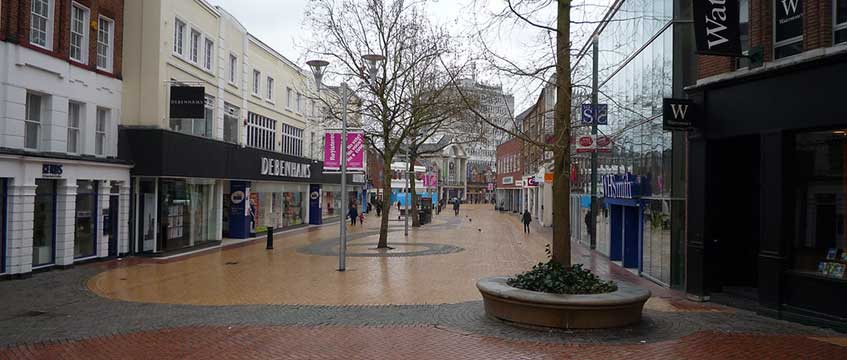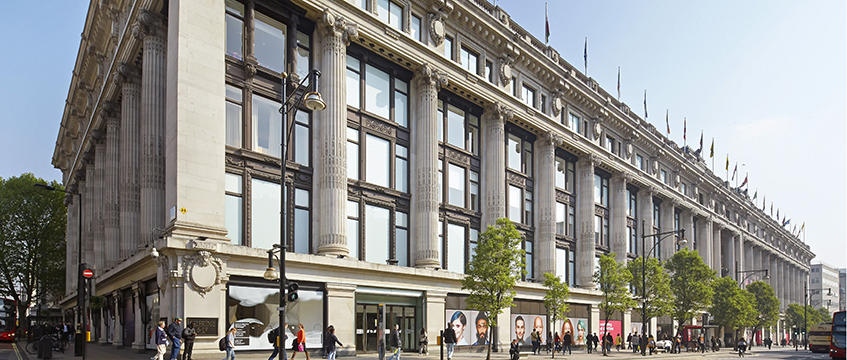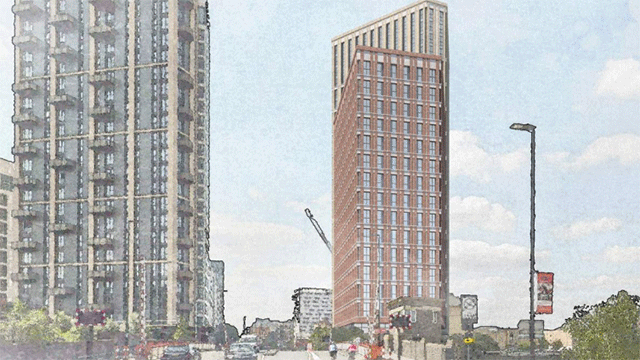Footfall at England’s shopping locations has worsened from the second national lockdown but has recovered since the first one last year, according to the latest data from BRC-ShopperTrak’s footfall monitor.
In England, footfall fell by 78% year-on-year last month. This marks a slightly sharper decline than the drop in numbers seen during the second lockdown last year, when footfall fell by 76%.
However, the decrease in visitor numbers to retail locations was not as steep as the first full lockdown in England last year, when there was an 82% year-on-year decline.
In the UK footfall decreased by 76.9% in January, falling by 30.8 percentage points from December. It is also the largest drop experienced in the UK since May 2020 (-81.6%).
UK footfall % change by location
By retail location type, the number of visitors to high streets plunged by 73.3% year-on-year. This was the deepest decline since May last year (-77.8%), and below both the three-month (-59.8%) and 12-month (-51.3%) average rates.
Footfall at retail parks dropped by 40.9% year-on-year, in its worst performance since May when a 55% reduction was recorded. This also ranked below the three-month average fall of 26.9%, and a 26.3% 12-month average decline.
Shopping centre footfall plummeted by 78.2% year-on-year, also marking its weakest levels since May last year (-84.9%). This was under the 59.9% average drop over the past three months, as well as a 52.6% average decline in the 12-month period.
Weekly regional retail footfall (% change YOY)
Geographically, Northern Ireland’s visitor numbers were the most resilient, standing at -66.4%. This was followed by Scotland, at -72.5%. Wales saw the steepest decline at -79.1%.
Helen Dickinson, chief executive of British Retail Consortium, said: “The drop in footfall clearly shows the public heeding government advice to stay home where possible.
“Retailers have also been playing their part, stepping up safety measures wherever possible in order to keep staff and customers safe.
“Nonetheless, the future uncertainty for closed retailers puts many jobs and stores at risk. In the face of rising rents and return to full business rates liability from April, businesses are having to make… decisions about their future.”
Andy Sumpter, EMEA retail consultant for ShopperTrak, said: “With the first full month of a new national lockdown, January certainly won’t have been the start to the year retailers were hoping for, as once more they had to shut up shop and inevitably footfall plummeted.
“But while it’s easy to let shuttered stores paint a bleak picture for the future of the high street – with many retailers now having faced almost a full year of store reopenings and closures as waves of Covid-19 have ebbed and flowed – it’s important to remember that when retail has reopened from lockdown, demand for in-store shopping has returned each time.
“And while the pandemic may have accelerated ‘Retail Darwinism’, those that have used this time as an opportunity to reset and invest in the operational foundations to meet new demands will be well placed to capitalise on pent-up demand for the in-person shopping experiences we have all been missing, as well as setting themselves up for strong, long-term growth.”
Source for charts: BRC-ShopperTrak
To send feedback, e-mail pui-guan.man@egi.co.uk or tweet @PuiGuanM or @estatesgazette













